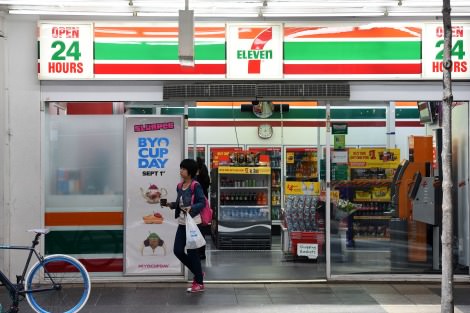Brexit, Donald Trump, One Nation — across the English speaking world, people have pointed to the electoral success of the populist right as a result of the frustration and despair of the 'white working class'.
 Characterised as lowly educated, under- or unemployed, living in areas devastated by the effects of deindustrialisation and austerity politics, these sections of the working class are seen to be against the elites, against migrants, against cosmopolitanism, against 'political correctness' and against globalisation.
Characterised as lowly educated, under- or unemployed, living in areas devastated by the effects of deindustrialisation and austerity politics, these sections of the working class are seen to be against the elites, against migrants, against cosmopolitanism, against 'political correctness' and against globalisation.
These electoral occurrences are seen to be the result of protest votes against all these things by people who have nothing left. Richard Seymour has written that the 'white working class' is couched in terms of having a lack of agency, where their whiteness is overpoliticised and their class position depoliticised.
How did the working class become 'white'? Jonathan Hyslop has shown that at the beginning of the 20th century across the English speaking world, such as Britain, the United States, Canada, Australia, New Zealand and South Africa, workers established organisations, such as trade unions and political parties, to protect their economic position, including the rejection of non-white people from many industries.
Migrant workers, as well as indigenous workers, were, in many circumstances, only allowed to partake in jobs on the periphery of industry, with poor conditions and low pay. Until the 1960s, labour organisations in Australia (as well as overseas) worked to actively prevent these marginalised workers from benefitting from the favourable conditions and pay delivered to white workers.
But in reality, the working class had never really been white. As Satnam Virdee, Kate Bagnall and Julia Martinez have argued, white and non-white workers have always worked together in some capacity, although their experiences were radically different.
In Australia, migrant workers from Asia, Africa, Europe and the Pacific had undertaken numerous jobs since the settler colony was established in 1788. Some, such as the Afghan camel men and the Chinese merchants, were self-reliant and provided services to the growing population that were sorely needed.
However, others, such as the Pacific Islanders in North Queensland's cane fields and the pearl diving South East Asians in Western Australia and the Northern Territory, were treated harshly and often served as indentured labour.
"Tackling racial discrimination in the workplace was not as readily embraced by the trade unions, who preferred a 'colour blind' approach to their membership."
While the White Australia Policy attempted to prevent non-white workers from living and working in Australia, people from across the globe continued to do both, although often at the margins of white Australian society. The organisations of the working class, the Australian Labor Party and the trade unions, were complicit in maintaining this racial divide until the 1950s. It was up to radical left-wing activists, such as those belonging to the Australian Communist Party, to agitate for solidarity between white and non-white workers against capitalism and Australian colonialism.
As the White Australia Policy started to break down in the 1960s with the post-war migration of people from across southern Europe and the Mediterranean, the hostility to migrant workers by the trade unions lessened and particularly the more militant unions became vocal critics of the remnants of the White Australia Policy enshrined in the Migration Act of 1958.
However tackling racial discrimination in the workplace was not as readily embraced by the trade unions, who preferred a 'colour blind' approach to their migrant worker membership. Pre-emptive steps to address racial discrimination were avoided by union leaders under the pretence of not giving 'special favours' to different sections of the trade unions — migrant workers were to be treated like 'ordinary' workers, even though they faced problems that white workers did not.
Like the rest of the global West, Australia has deindustrialised over the last 30 years and the manufacturing workplaces that provided jobs for many new arrivals to Australia have gone. Just as the Chinese merchants and Afghan camel drivers did in the late 19th century, many other migrants to Australia started their own small businesses, carving out their own spaces in the Australian economy and society, particularly in the service industries.
These have thrived, while the new jobs that have replaced the traditional manufacturing sector have become more precarious. Because of their low job security (and corresponding pay and work conditions), these are being taken up by a new wave of migrants, working in the 24/7 convenience stores, driving taxis or cleaning buildings. These workers, on the fringes of the organised labour movement, are part of the Australian working class, but are often not considered such.
They live in the same suburbs as the 'white working class' and feel the same socio-economic pressures, but are often dismissed by politicians and by the media as part of an ethnically determined community, with no overlap between these communities and the wider community they live within. They are accused of not integrating, but it is drummed into them that they are different from the rest of the working class.
Migrant workers are often depicted as competition for jobs and access to services, and as a cultural threat. This allows the 'white working class' to define itself by its whiteness and manifest economic insecurities in a racialised manner. They are pandered to by these same politicians and sections of the media, who argue that their 'concerns' about immigration have to be taken seriously. At the same time, these new migrants, as well as many of the second and third generations of previous migrant waves, who live in the same neighbourhoods and under the same socio-economic conditions, are swept to the sides.
What is the effect of this on our political discourse? Hierarchical (and often conservative) ethnic community organisations become the primary political outlet for the grievances of those who inhabit the various migrant communities around Australia, while the mainstream political parties fawn over the 'white working class' as the 'forgotten people', 'battlers' or 'working families', whose politics are determined down the pub (hence the 'pub test').
While it is reductionist to argue that capitalism drives racism to divide the working class, nearly 40 years of neoliberalism has encouraged a fragmentation of the working class and for ethnic/cultural identity to be seen as the defining characteristic, rather than class position. In 2016, it seems that this has manifested into the electoral victories of the populist right and while we are not on the brink of a fascist coup, many people of colour in Australia (and around the world) are worried about the future.
 Evan Smith is a Visiting Adjunct Fellow in the School of History and International at Flinders University, South Australia. He blogs at Hatful of History and tweets from @hatfulofhistory.
Evan Smith is a Visiting Adjunct Fellow in the School of History and International at Flinders University, South Australia. He blogs at Hatful of History and tweets from @hatfulofhistory.
This is the latest article in Eureka Street's ongoing series on work.